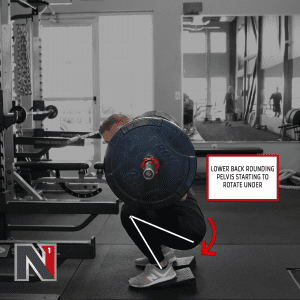Between social media and our teaching events around the world, we get our fair share of questions pertaining to range of motion (ROM). When teaching an exercise or critiquing someone’s current execution, we will get questioned if it is “full range of motion” (fROM). Before we answer that question here, it is important that we first cover what the difference is between the full range of motion of a muscle versus the full range of motion of a movement.
Before we dive into the specific differences between the ROM of the muscle vs the movement, we will first define range of motion and break it down into its three general types:
“Range of motion is one of the most important variables that you need to individualize for every person and every exercise because ultimately, training in the appropriate range of motion is going to protect somebody from injury and make sure that the tissue that you’re trying to work is working that entire time. The second you go to a point to the range where now, other structures are being loaded, the weight’s now going on joints or other musculature, you can no longer account for what the metabolic stress or the neurological stress is going to be for that tissue because you’re essentially loading it and unloading it by going within a range of motion that it can work and then out of that range of motion.”, as Coach Kassem Hanson states in the Level 1 Biomechanics and Execution course.
Learn more about the ranges of motion in this article
Full Range of Motion of Muscle: This will specific to the individual performing the movement. This is when we are within our active ROM of the tissue being targeted.
Full Range of Motion of Movement: This will be specific to the exercise or equipment being used to perform the movement. This is when we are at the terminal end range of the given exercise being performed.

For example, if we are looking at the barbell back squat: As you can see in this first photo, I have stopped short of the fROM of the movement, but I am within my active/training ROM. The target musculature is actively contributing to resisting the load.

As you can see in this second photo, I have exceeded my active/training ROM and went to the terminal end range of the movement, passively. The target musculature is no longer actively contributing to resisting the load. I have started to compensate and passed off the load to other tissues.
As mentioned above, range of motion is one of the most important variables that you need to individualize for every person and every exercise to maximize the outcome of your training, while reducing the risk of injury. Not only does this help you logically solve the argument of “ass to grass squats,” you should now have the baseline level of knowledge to educate the internet trolls and the “experts” at your gym on the importance of range of motion and how to appropriately use it within training.
If you would like to read where we stand on the importance of creating tension within your training, READ THE FULL ARTICLE HERE!
Between social media and our teaching events around the world, we get our fair share of questions pertaining to range of motion (ROM). When teaching an exercise or critiquing someone’s current execution, we will get questioned if it is “full range of motion” (fROM). Before we answer that question here, it is important that we first cover what the difference is between the full range of motion of a muscle versus the full range of motion of a movement.
Before we dive into the specific differences between the ROM of the muscle vs the movement, we will first define range of motion and break it down into its three general types:
“Range of motion is one of the most important variables that you need to individualize for every person and every exercise because ultimately, training in the appropriate range of motion is going to protect somebody from injury and make sure that the tissue that you’re trying to work is working that entire time. The second you go to a point to the range where now, other structures are being loaded, the weight’s now going on joints or other musculature, you can no longer account for what the metabolic stress or the neurological stress is going to be for that tissue because you’re essentially loading it and unloading it by going within a range of motion that it can work and then out of that range of motion.”, as Coach Kassem Hanson states in the Level 1 Biomechanics and Execution course.
Learn more about the ranges of motion in this article
Full Range of Motion of Muscle: This will specific to the individual performing the movement. This is when we are within our active ROM of the tissue being targeted.
Full Range of Motion of Movement: This will be specific to the exercise or equipment being used to perform the movement. This is when we are at the terminal end range of the given exercise being performed.


As mentioned above, range of motion is one of the most important variables that you need to individualize for every person and every exercise to maximize the outcome of your training, while reducing the risk of injury. Not only does this help you logically solve the argument of “ass to grass squats,” you should now have the baseline level of knowledge to educate the internet trolls and the “experts” at your gym on the importance of range of motion and how to appropriately use it within training.
If you would like to read where we stand on the importance of creating tension within your training, READ THE FULL ARTICLE HERE!

Please log in to access the menu.